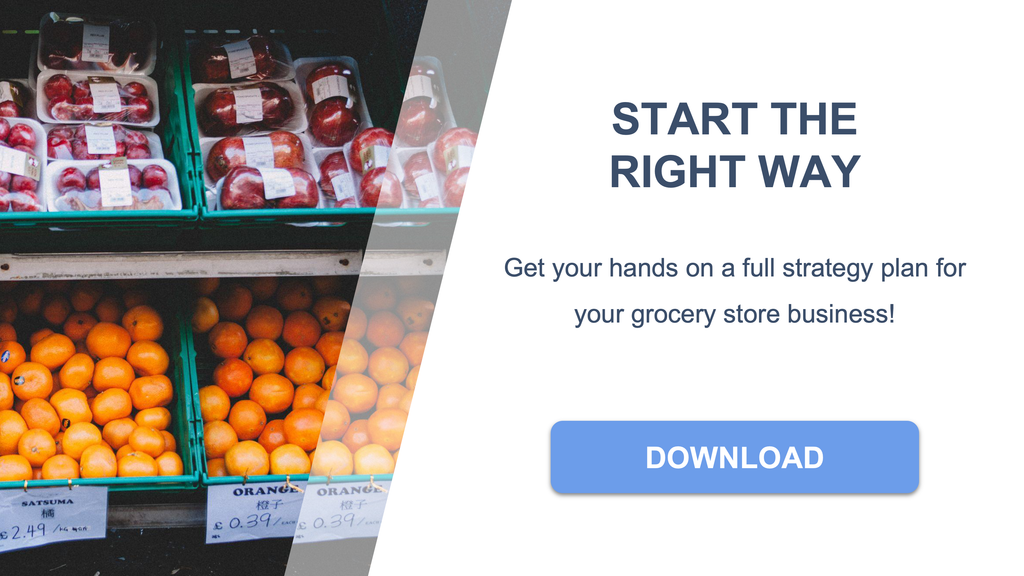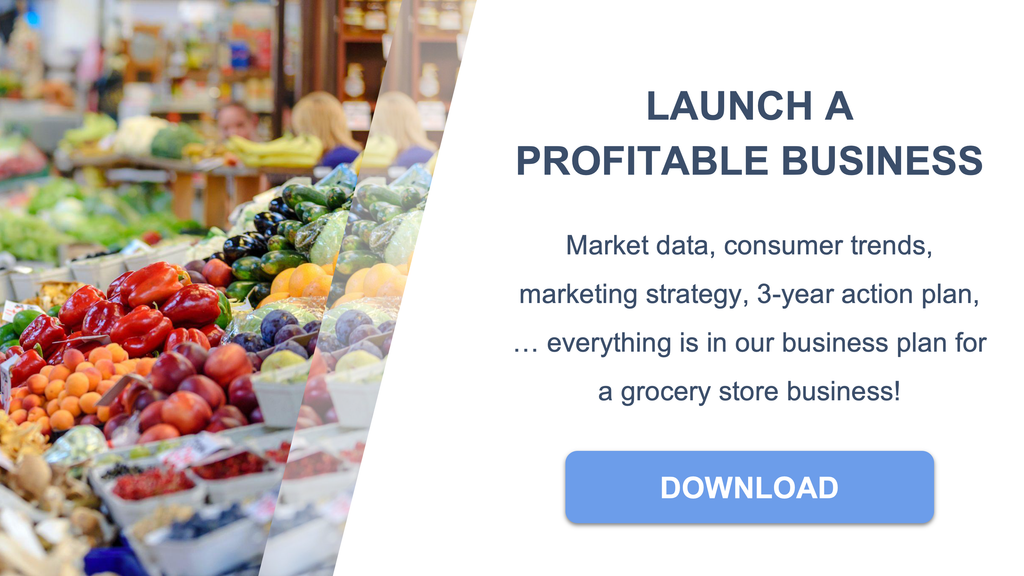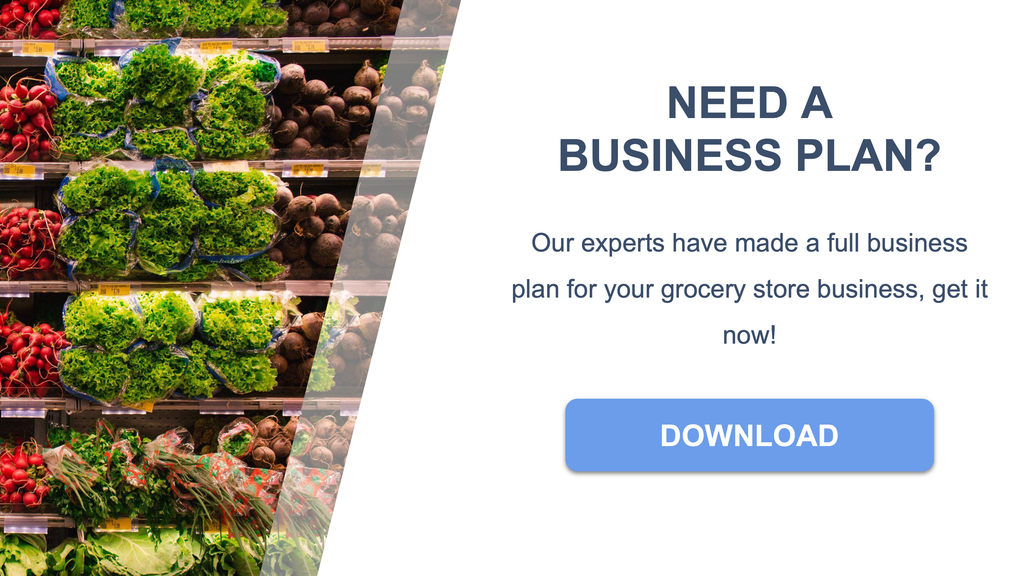
Get a watermark-free, fully customizable SWOT analysis in our business plan for a grocery store
We've drafted tons of business plans for grocery storees and, far too often, business owners neglect to dedicate time and thought to crafting a strategic vision for their new project.
It's mainly because they lack the right tools and frameworks. The SWOT analysis is one of them.
What is it? Should you make a SWOT for your grocery store?
A SWOT analysis is a key tool for strategic planning, which is highly beneficial for various businesses, including grocery stores. It stands for Strengths, Weaknesses, Opportunities, and Threats.
This method was developed to help businesses gain a comprehensive understanding of their internal capabilities and external environment. For grocery stores, which operate in a highly competitive retail space, it's especially valuable.
When you're operating a grocery store or considering opening one, performing a SWOT analysis can be instrumental. It enables you to identify what you're doing right (strengths), areas that need improvement (weaknesses), potential avenues for growth (opportunities), and external challenges that may arise (threats).
For example, your grocery store's strengths might include a wide variety of products or an excellent location, while weaknesses could be inefficient supply chain management or inadequate customer service. Opportunities may emerge from trends like organic products, and threats could include new market entrants or fluctuating market prices.
Owners often turn to a SWOT analysis when they are planning to launch a new grocery store, contemplating significant changes, or facing business hurdles. It offers a structured way to analyze the business landscape.
By understanding these four components, you can make more informed business decisions, set priorities, and develop strategies that leverage your strengths while addressing your weaknesses.
If you're on the verge of starting a new grocery store project, conducting a SWOT analysis is not just beneficial; it's crucial. It aids in pinpointing what makes your store unique, areas where you might need to invest more, and what external factors you should be ready for.
While a SWOT analysis doesn't ensure success, it greatly enhances your chances by offering clear insight and strategic direction.
Finally, if you're writing a business plan for your grocery store, then you should definitely draft a SWOT analysis.
How do you write a SWOT analysis for your grocery store?
Filling out a SWOT analysis for your grocery store can be a valuable exercise, especially when you're planning for future strengths, weaknesses, opportunities, and threats.
Begin by researching the grocery industry and your local market. Understanding consumer trends, market dynamics, and competitor strategies is crucial. This information can come from industry reports, customer surveys, and market analysis.
Engaging with other grocery store owners and industry professionals can also provide practical insights. They might share experiences and challenges that you haven't considered.
The objective of a SWOT analysis is to equip you with strategic insights, not to predict every future scenario accurately.
Strengths
Reflect on what sets your grocery store apart. Do you offer unique or locally sourced products? Is your location convenient for a large segment of the community? Consider if you have a strong supply chain network, or perhaps you excel in customer service.
These internal factors can differentiate your store in a competitive market.
Weaknesses
Honesty is key when identifying weaknesses. Are you facing challenges with inventory management or supplier reliability? Perhaps your marketing budget is limited, affecting your ability to reach new customers. Lack of experience in retail or a highly competitive location can also be weaknesses.
Recognizing these areas helps you to focus on improvement or seek external support.
Opportunities
Opportunities arise from external factors that you can leverage. Maybe there's a growing demand for organic products in your area, or you have the potential to collaborate with local farmers. Trends like online ordering and home delivery services can also be explored.
Opportunities like these can help your store to grow and attract new customers.
Threats
External threats could include changing market regulations, fluctuations in supply chain costs, or a shift in consumer shopping habits towards e-commerce platforms. The entrance of large supermarket chains into your area can also pose a significant threat.
Being aware of these threats allows you to prepare and strategize accordingly.

Examples of Strengths, Weaknesses, Opportunities and Threats for the SWOT of a grocery store
These strengths and opportunities can be leveraged to improve the profitability of your grocery store.
| Strengths | Weaknesses | Opportunities | Threats |
|---|---|---|---|
| Wide variety of products | Limited parking space | Online grocery shopping | Competition from larger chains |
| Fresh and locally sourced produce | Small store size | Health and wellness trends | Rising costs of goods |
| Excellent customer service | Dependency on specific suppliers | Expansion to new locations | Changing consumer preferences |
| Convenient location | Outdated technology infrastructure | Partnerships with local farmers | Regulatory changes |
| Loyalty programs and discounts | Limited marketing budget | Introduction of private-label products | Fluctuating economic conditions |
| Strong relationships with suppliers | Inadequate inventory management | Community engagement initiatives | Seasonal fluctuations in demand |
| Effective inventory management | Reliance on manual processes | Implementing sustainable practices | Security and theft concerns |
| Competitive pricing | Limited online presence | Targeting niche markets | Supply chain disruptions |
| Flexible operating hours | High employee turnover | Integration of technology for efficiency | Changing demographics in the area |
| Strong brand reputation | Outdated store layout | Collaboration with local businesses | Environmental and natural disasters |
More SWOT analysis examples for a grocery store
If you're creating your own SWOT analysis, these examples should be useful. For more in-depth information, you can access and download our business plan for a grocery store.
A SWOT Analysis for an Organic Grocery Store
Strengths
An organic grocery store stands out with its commitment to health and sustainability. It offers a wide range of organic and non-GMO products, catering to health-conscious consumers. The store's ethical sourcing practices and support for local farmers add to its appeal. Its eco-friendly initiatives, like minimal plastic use and waste reduction, also resonate with environmentally aware shoppers.
Weaknesses
Higher prices for organic products can be a significant barrier, limiting the store's appeal to budget-conscious customers. The limited shelf life of organic produce might lead to higher waste and inventory management challenges. Additionally, reliance on seasonal and local produce can restrict product variety at certain times of the year.
Opportunities
Expanding the range of private-label organic products can enhance customer loyalty and profitability. Collaborating with local health and wellness influencers can boost the store's visibility and attract new customers. Offering educational workshops on organic living and cooking can also engage the community and build a loyal customer base.
Threats
Competition from larger supermarket chains offering organic sections can be a significant threat. Economic downturns may lead to reduced spending on premium products. Additionally, any negative publicity about organic farming practices can impact customer trust in organic labels.
A SWOT Analysis for a Discount Grocery Store
Strengths
A discount grocery store's primary strength is its affordability, attracting a broad range of customers, especially those on tight budgets. Its efficient, no-frills shopping experience and bulk purchasing allow for lower prices. The store often features a dynamic range of products, including overstock items from other retailers, which can appeal to bargain hunters.
Weaknesses
The store may struggle with a perception of lower quality due to its focus on discount pricing. The limited selection of brands and irregular availability of certain products can frustrate customers looking for specific items. Additionally, the basic store layout and minimal customer service might not appeal to those seeking a premium shopping experience.
Opportunities
Introducing a loyalty program could enhance customer retention and increase average spend. Partnering with local businesses for unique or exclusive product offerings can differentiate the store from other discount retailers. Expanding online shopping and delivery services can also capture a segment of customers who prefer convenience.
Threats
Intense competition from other discount and bulk retailers is a constant challenge. Economic improvements might shift consumer preferences towards higher-quality or specialty products. Fluctuations in supply chain costs can also impact the store's low-price model.
A SWOT Analysis for a Gourmet Specialty Grocery Store
Strengths
This type of store excels in offering unique, high-quality products, including international and artisanal items not commonly found in standard supermarkets. Its focus on customer experience, with tastings and expert staff, adds to its appeal. The store often attracts food enthusiasts and customers seeking special ingredients for cooking.
Weaknesses
Higher prices for specialty items can limit the store's customer base to a more affluent demographic. The niche focus on gourmet products might also alienate customers looking for everyday grocery items. The store could face challenges in maintaining a consistent supply of rare or imported items.
Opportunities
Hosting cooking classes and culinary events can enhance the store's reputation as a foodie destination. Developing an online presence with e-commerce options can expand its customer base beyond the local area. Partnering with local chefs and restaurants to feature their recommended products could also boost sales and visibility.
Threats
Competition from online gourmet retailers and larger supermarkets expanding their premium offerings is a threat. Economic downturns may lead to reduced spending on luxury food items. Additionally, changes in food trends can rapidly shift consumer preferences, requiring the store to continuously adapt its product selection.

